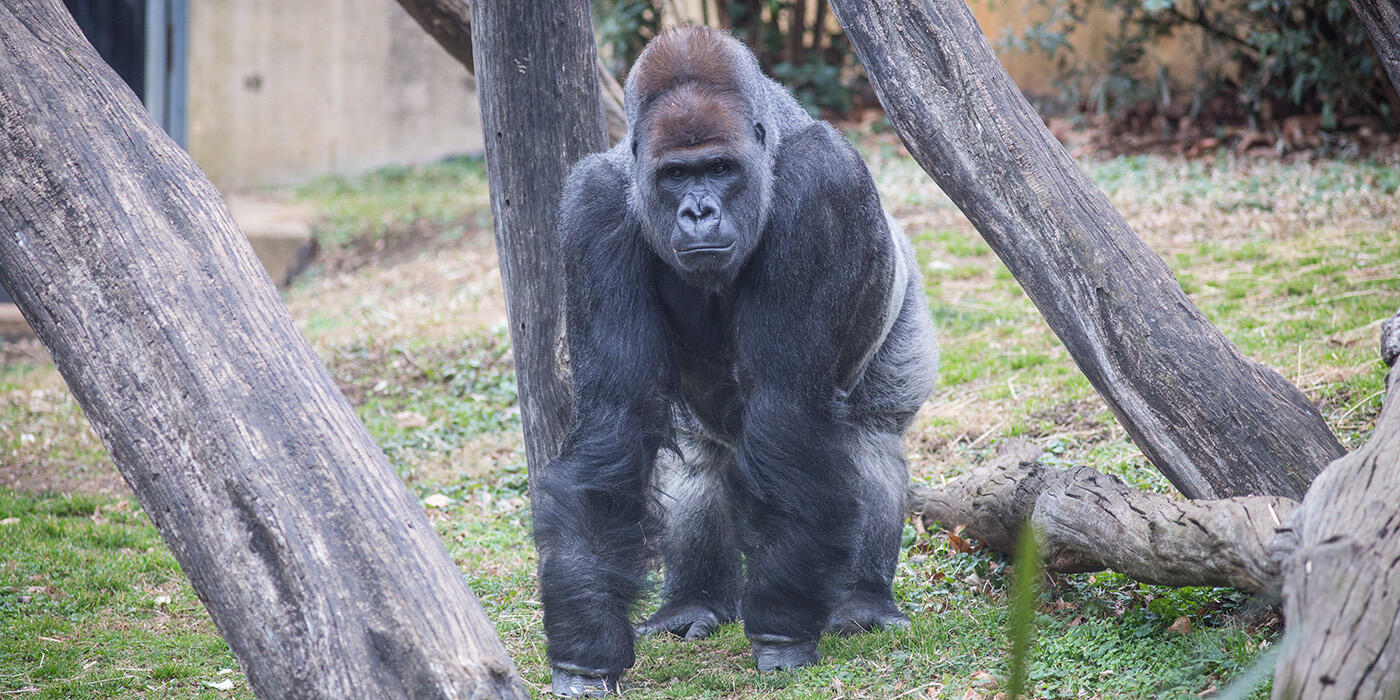#GorillaStory: World Gorilla Day 2020
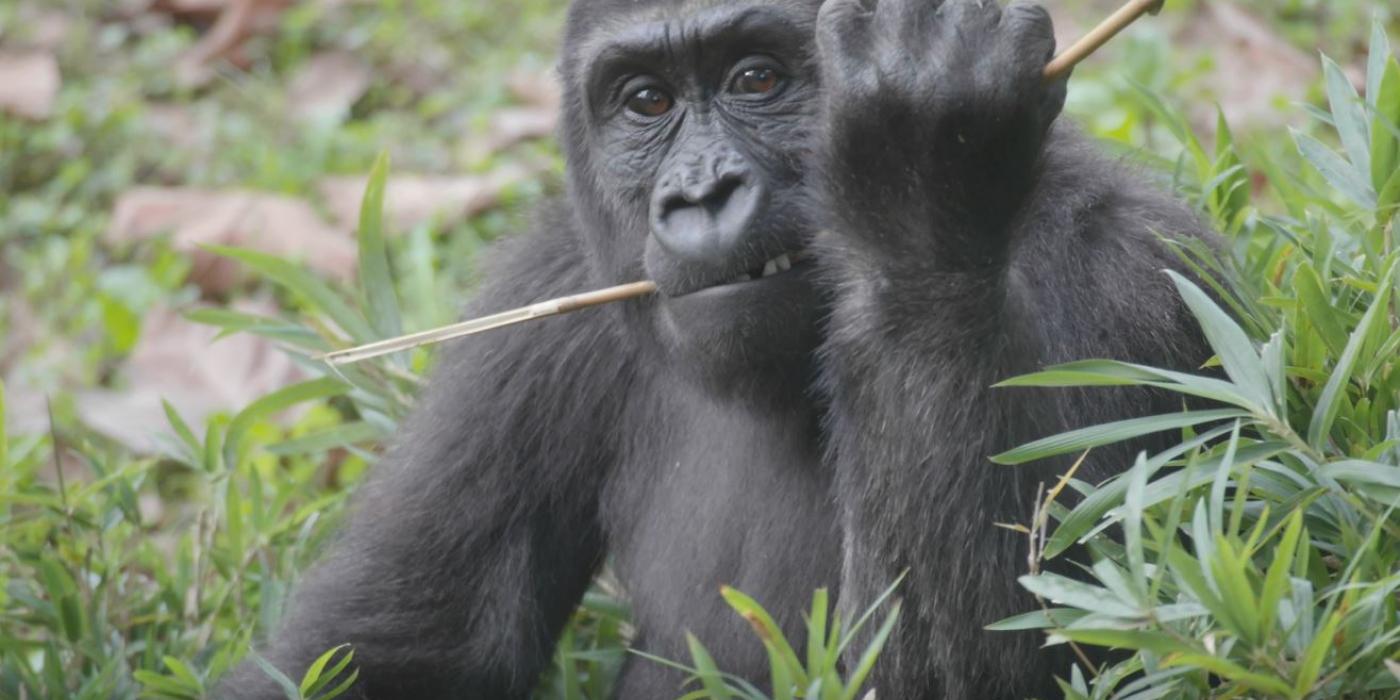
Sept. 24 is World Gorilla Day, and we are celebrating with an update on our 2-year-old, Moke, and his troop! Our growing gorilla infant is packing on the pounds—nearly 50 and counting. Day by day, he’s coming into his own as an independent, curious and (occasionally) goofy gorilla.
Moke’s playfulness is one of our favorite attributes. Sometimes, he even gets us to join in the fun, too. Recently, Moke has taken to tumbling and twirling around his enclosures. One morning, Carly decided to spin with Moke, and he got a big kick out of that! Every time he twirled, she twirled, too. He spun around so much that he had to sit down and take a breather. Another morning, Carly tried to up the ante and did a cartwheel for Moke, hoping to “wow” him. Alas, he was quite unimpressed and went about his business. He seems to prefer dancing over gymnastics!
The relationship between Moke and his father, Baraka, is something truly special to witness. When they play with one another, it really is a sight to see! Moke is built like a tank, but he’s nowhere near as big as his 400-pound dad. Despite their remarkable size difference, they make great playmates.
Turn the volume up to hear Moke and Baraka laugh as they play together.
Like most dominant silverbacks, Baraka is always vigilant about his troop. He keeps a watchful eye over Moke’s mother, Calaya, females Mandara and Kibibi, and—of course—Moke. When the rest of his troopmates are relaxing and content, Moke is tearing around the enclosure, egging the others on to play with him.
Sometimes, Baraka will shoo Moke away if he isn’t in the mood to indulge his son. But, if you are in the right place at the right time, you might catch a glimpse of them wrestling. Just like humans, gorillas are great apes. And, just like we laugh, they laugh, too! This vocalization is one of Erin’s favorite sounds to hear.
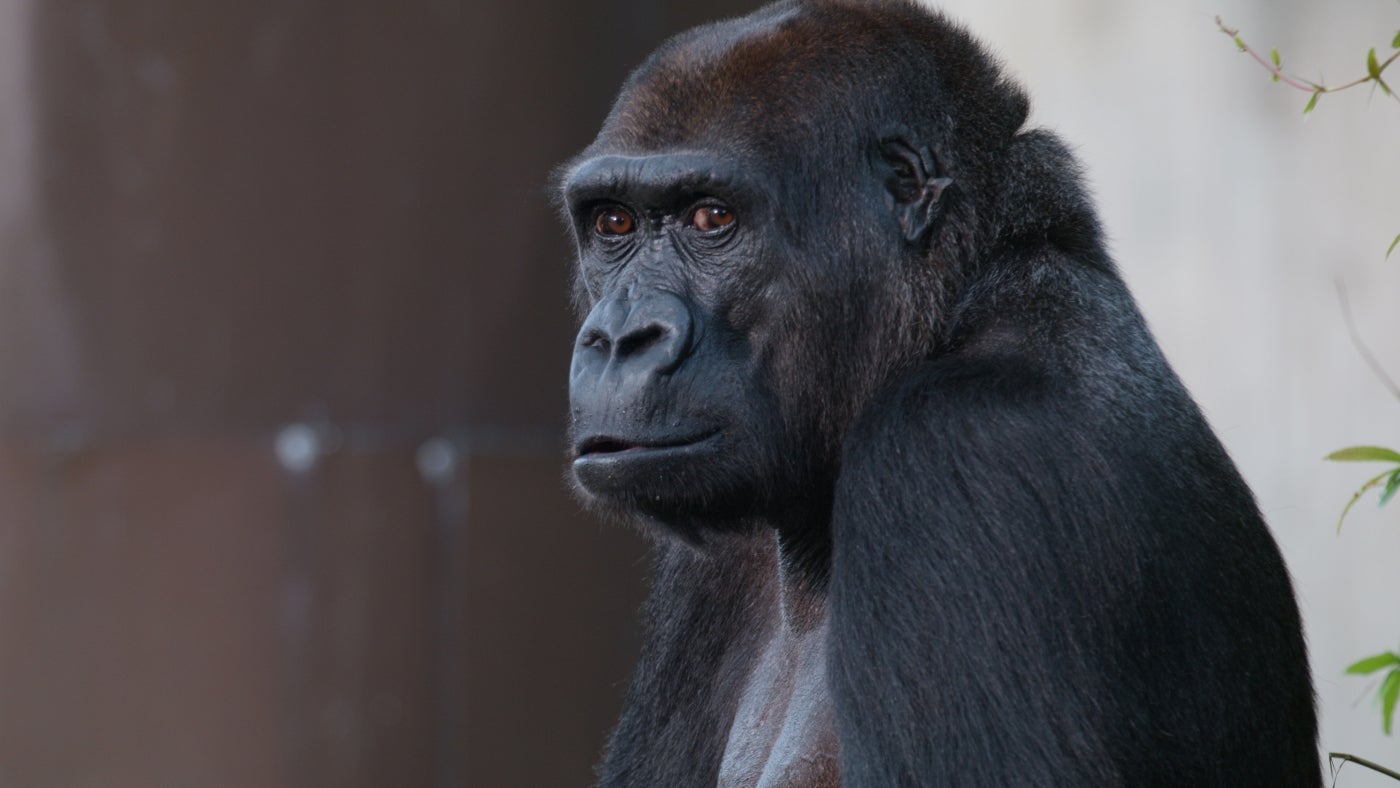
This summer, Mandara—who was a foster mom to Baraka—spent some quality time with Moke as well. As Moke grows, Calaya has allowed him to have more independence. In their outdoor enclosure, he galivants about the yard, doing as he pleases. In this setting, Moke approaches Mandara to play, and she happily obliges. He isn’t as rough-and-tumble with her as he is with Baraka or his best buddy, Kibibi, but it is encouraging to see their relationship grow nonetheless.
Moke’s interaction with keepers isn’t limited to playtime. We work with him daily during positive reinforcement training sessions, in which he learns behaviors that help him participate in his own health care. Although his attention span is still limited—he is only 2, after all—he has made some fantastic progress. His repertoire continues to grow and impress us, especially considering his young age.
Just like our 4-year-old Bornean orangutan, Redd, Moke was quick to pick up the “open mouth” behavior that we use to check their teeth. He is a really good student when it comes to presenting other body parts, too. Showing his hands, arms, feet, legs, ears and back on cue allows us to check for any injuries that may need medical attention. It also helps us administer vaccines, such as his annual flu shot. When he presses his shoulder up against the mesh, we are able to give him a quick prick with a needle. Moke goes through the motions like a champ—he doesn’t even flinch!
Over the past year, we have worked closely with Moke to obtain his vitals. Knowing what his normal values are enhances our ability to monitor his overall health. We are able to take Moke’s temperature using an ear thermometer, and we can obtain his heart rate and oxygen saturation value by putting a pulse oximeter on his finger. He is in the process of learning to present his chest for awake cardiac ultrasounds, just like the adult gorillas do. He seems to enjoy the attention and praise he receives from us—not to mention the treats that come along with doing the correct behaviors.
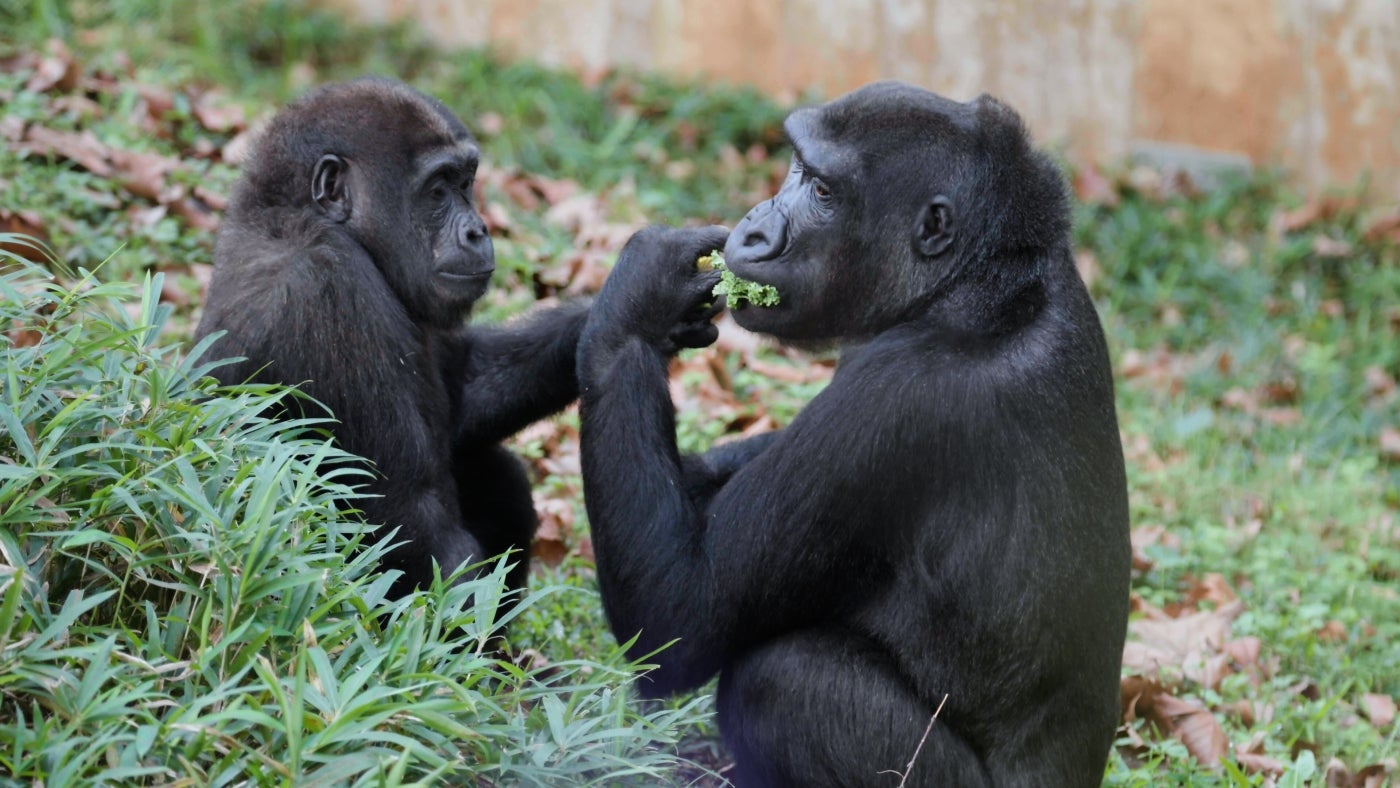
Visitors often ask us what our gorillas eat. These apes are mainly herbivores—their diet consists of plants. In the wild, they eat wild celery, stems, bamboo shoots, fruits and tree pulp. Here at the Zoo, our gorillas eat a varied diet made up of leafy greens, vegetables and fruits that are prepared by our wonderful Nutrition Sciences team.
Adult male gorillas, like Baraka and our bachelor silverback, Kojo, eat about 45 pounds (32 kilograms) of food per day. Females eat about two-thirds of that amount. Each gorilla has his or her favorite food. Moke, for example, has developed a taste for green bell peppers! Romaine lettuce seems to be enjoyed universally.
In addition to their individual diets, the gorillas also receive browse (fresh tree trimmings) to snack on. To encourage the gorillas to forage, we will hide some of their food in puzzle feeder enrichment. It takes both brain power and dexterity to access the treats inside.
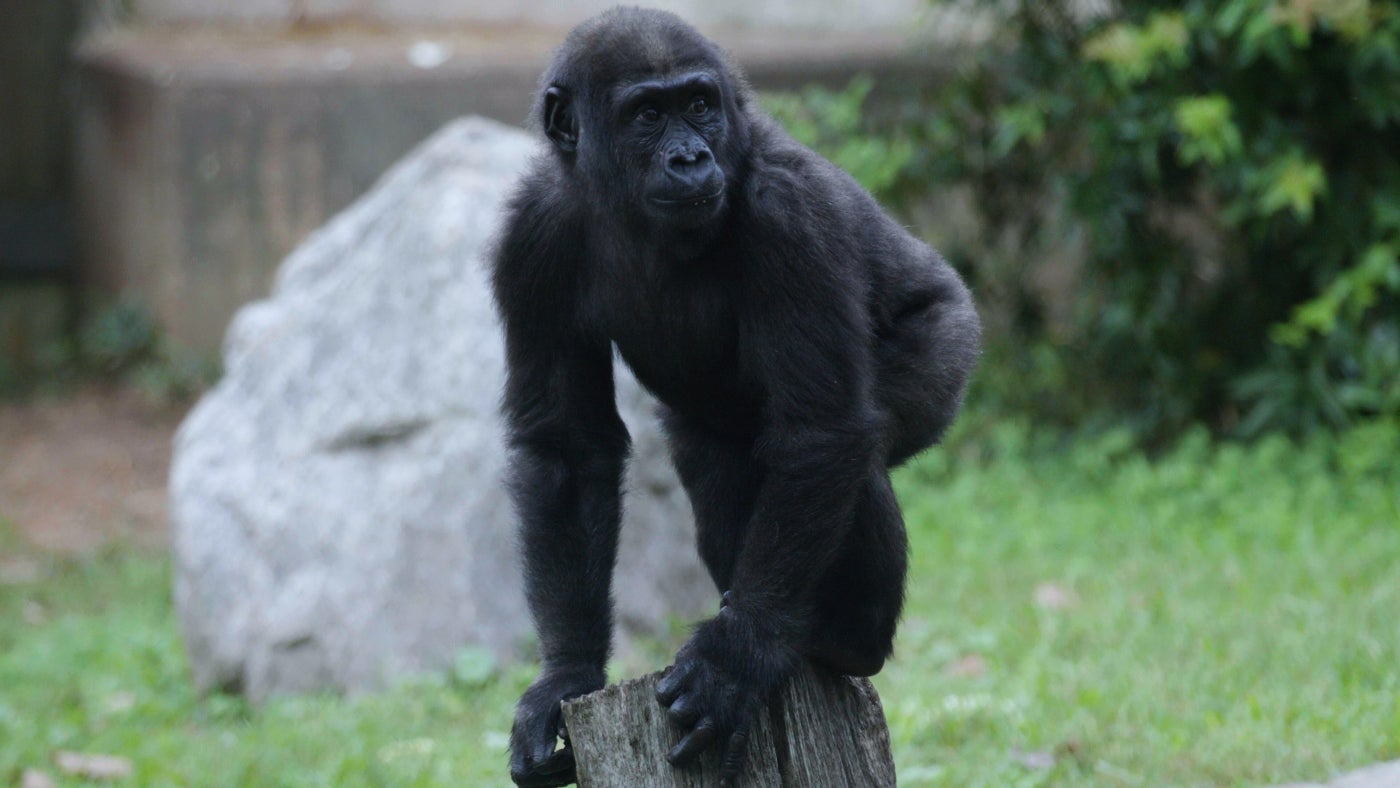
Moke—and all of our gorillas—are wonderful ambassadors for their counterparts in the wild. Raising awareness about this species is more important than ever, given that the International Union for Conservation of Nature considers them to be critically endangered.
In their native countries of Gabon, Central Africa Republic, Cameroon, Angola, Equatorial Guinea and Democratic Republic of the Congo, western lowland gorillas face many challenges. Their survival is threatened by disease (the Ebola virus), hunting (for commercial bushmeat) and deforestation (for logging and mining). In the past 25 years, their population has declined by more than 60%.
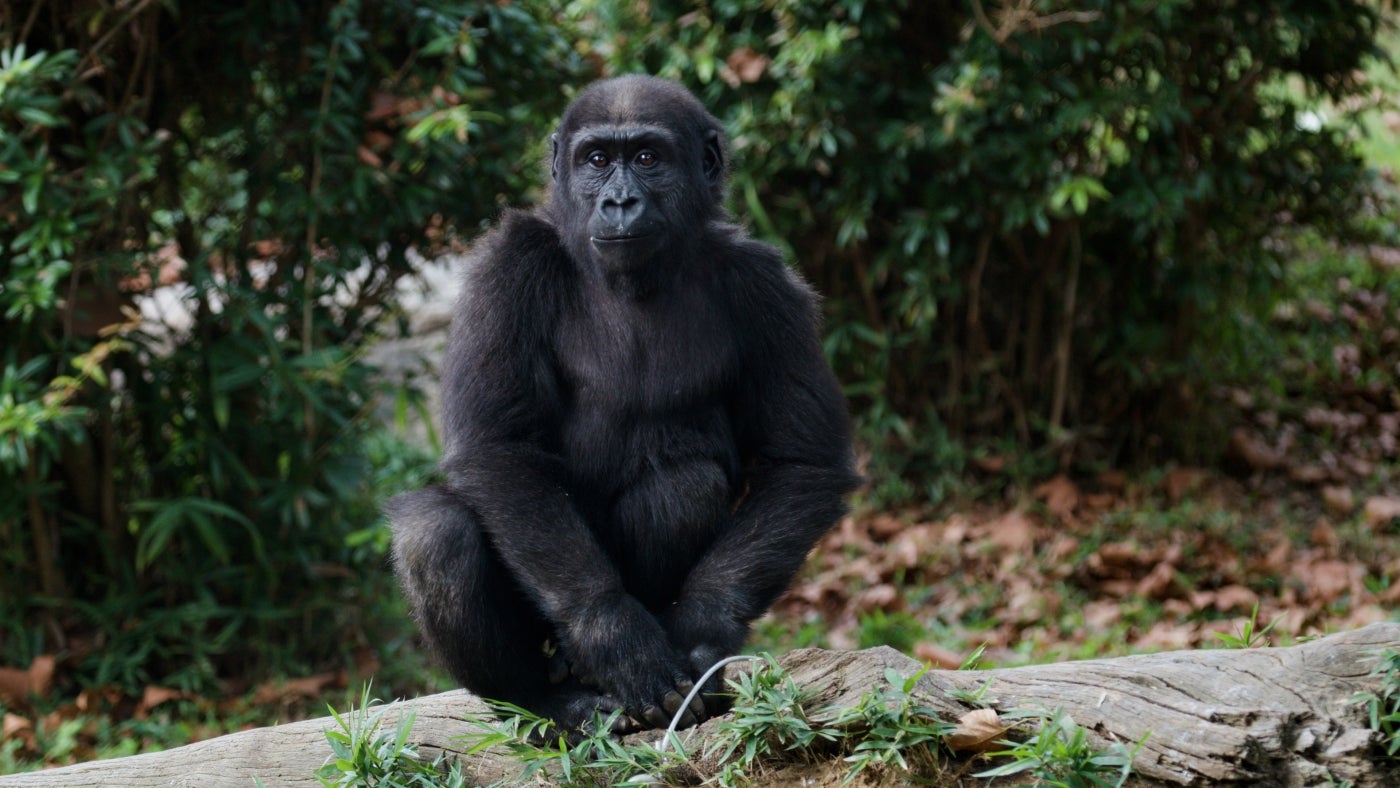
The good news is that you can take action today to help save this species! Share Moke’s story, and help raise awareness about these gentle and good-natured animals. Taking small actions—think reduce, reuse, recycle—can make a big difference in the lives of Moke’s wild counterparts.
For instance—did you know that recycling your electronics can help save gorilla habitat? It’s true! One of the metals inside electronic devices that can be recycled is called coltan. It is heat-resistant and can hold a high electrical charge. And, it is mined where gorillas live in the Democratic Republic of the Congo. Recycling electronics can greatly help reduce the need for more expansive coltan mining. Check out some helpful resources and recycle those cell phones, laptops, cameras, gaming consoles, hearing aids and GPS navigation systems that you’re no longer using.
Contributing to a healthier planet for all wildlife would be an excellent way to show our appreciation for these truly great apes, today and every day!
This story appears in the October 2020 issue of National Zoo News. Planning to see Moke in person this autumn? Check out our guide for planning your visit to the Zoo!
Related Species:

